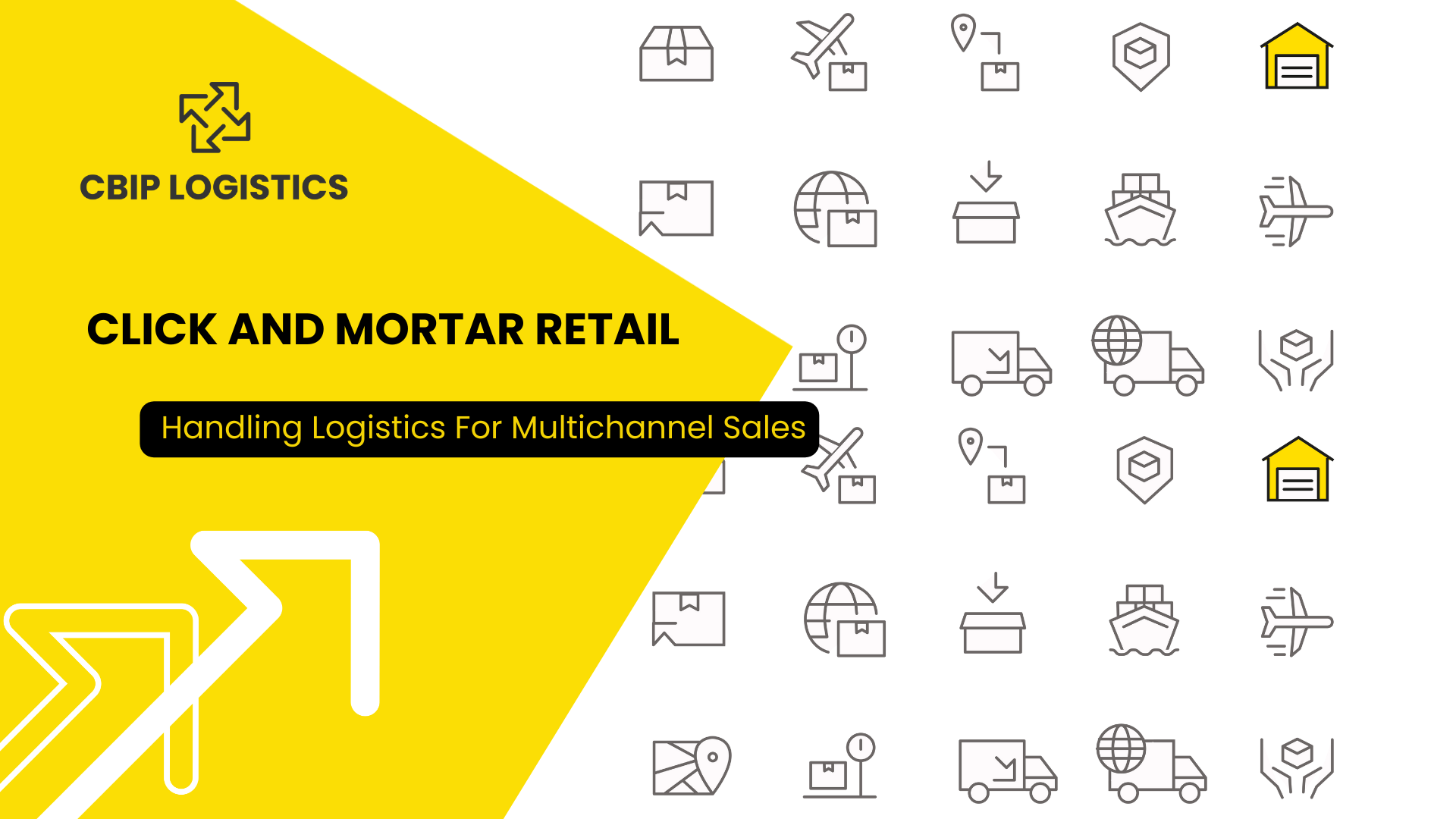Click and Mortar Retail: Handling Logistics for Multichannel Sales

According to Statista, more than 85% of US retail sales in 2023 occurred in a store.
Stats like these seem shocking when you look at the increase in e-commerce sales. However, there are still many large companies that do well selling in-person; stores like Costco, Walmart, Target, and various home improvement stores are hugely popular for in-store shopping.
The truth is that most consumers shop in multiple channels; in online stores, in apps, on social media, and in-store. If you are not offering a consistent customer experience across all of your sales channels, you are failing your customers — and hurting your brand.
This is one area of sales where logistics plays a crucial role. Having multiple spaces to sell your products is a great idea to attract different types of customers, but it does add an extra challenge when it comes to logistics.
After all, traditional logistics for big box retail stores is very different from e-commerce logistics.
E-commerce logistics adds an entirely new element: last-mile delivery. This on its own can be quite challenging, but managing two different sales channels may prove complicated and messy for retailers without a dedicated team and execution strategy.
As a retailer, you’ll want to create a seamless and consistent experience across all sales channels to make managing your sales channels easy and to give your customers a great shopping experience. With so many different moving parts, how is that possible?
We’ll walk you through how to manage logistics for all your sales channels — read on!
Read About CBIP’s Global 4PL Logistics Services
Components of big-box versus e-commerce logistics
No matter where the goods end up, the journey they take from the supplier will look similar. Everything starts with a supplier, and then ships in bulk cargo shipments. This involves freight forwarders, freight ships or planes, trains, and cargo trucks.
All this ends up in a warehouse; that’s where things start to branch off.
Where traditional logistics deals with:
- Large volume
- Single category
- Fixed customer orders
E-commerce logistics focuses on:
- Small batches
- Multiple categories
- Scattered customers
Where traditional logistics has a long payment cycle, e-commerce logistics has a short one. Traditional logistics is stable and slow, whereas e-commerce is agile and efficient.
Once your items are stored in bulk, they can either be taken off warehouse shelves to stock a retail store, or they will be sent to a fulfillment center until they’re ordered, picked, and packed.
Some goods leave the warehouse in bulk destined for retail stores, while others are stored in a fulfillment facility to await orders coming in from shopping apps, web stores, and the like.
This leaves you with a lot of moving parts, and processes that need to happen independently of one another, simultaneously. All these things can happen in tandem seamlessly; it's all about managing the parts in real time with the right technology and capable partners.
Related: How Automation Is Bringing Warehouses Into The Future
Part 1: The Right Technology
You need to make sure you are integrating data from all your sales channels back into one source so your team can process the data effectively.
You need to use an Order Management System that can pull sales data from all channels and third-party service providers, pooling that data on your own central platform. That OMS needs to include two things: An integrated POS system, and an inventory management system that can handle multiple locations.
The integrated POS system
When you are managing in-store locations with online stores, things can get hectic quickly. You don’t want customer experience to drop for customers who are shopping through one avenue while service in the other suffers.
In order to keep things straight, the first thing you need is a great POS system. Using a POS system, you can track inventory and sales info throughout your online and in-store sales, including shopping apps and social media.
The Inventory management system
If you aren’t properly managing your inventory throughout all sales channels, this could lead to stockouts and unpleasant feedback from disappointed customers.
An IMS automated your inventory management, giving you real-time data and analytics on what’s going on with your stock. An IMS can:
- Use data and KPIs to plan for seasonal or unexpected sales spikes
- Track products in real-time through multiple channels as they are sold by connecting with the POS system
- Manage the whole fulfillment process, from picking/packing to the customer's door or retail location
Part 2: A dedicated logistics team
One of the most challenging aspects of multichannel selling is the sheer scale of it all. You either need an experienced in-house team able to oversee logistics throughout your various channels, or you need to hire a logistics partner.
The problem is that you will need a partner who can integrate seamlessly with your POS system. Ideally, you need someone who can oversee the entire supply chain, and who can help you integrate technology throughout so you have total transparency.
CBIP Logistics is that partner. We are not just another 3PL fulfillment provider. Our service as a 4PL spans much further; we design your entire logistics operation, using providers from our worldwide network, and we integrate all the systems throughout your supply chain and POS into one, easy-to-access platform.
With the time and peace of mind you get back, you can really focus on building your business and developing your brand across all your sales channels. Get in touch with us today to find out how CBIP can help you build, connect, and optimize your multichannel sales strategy.






